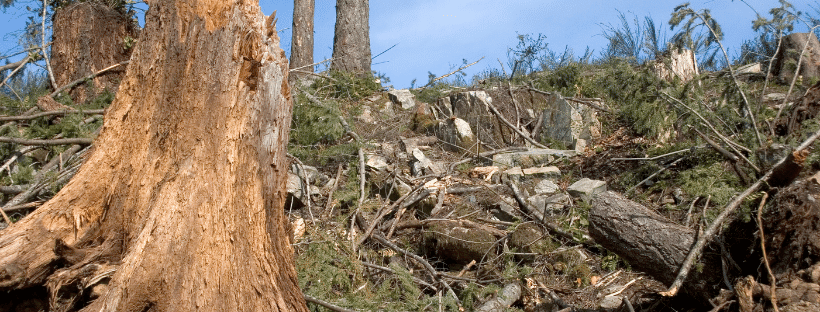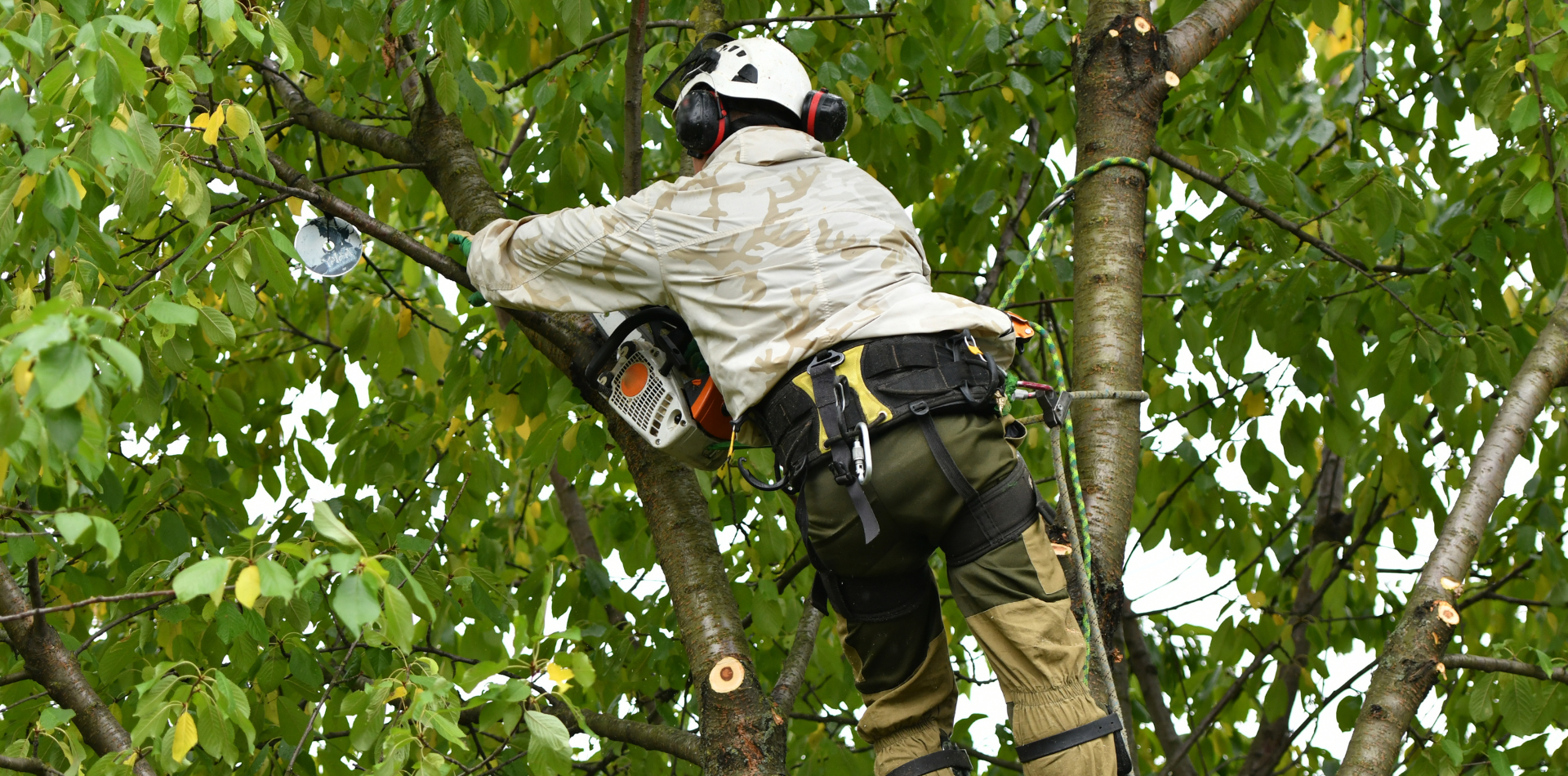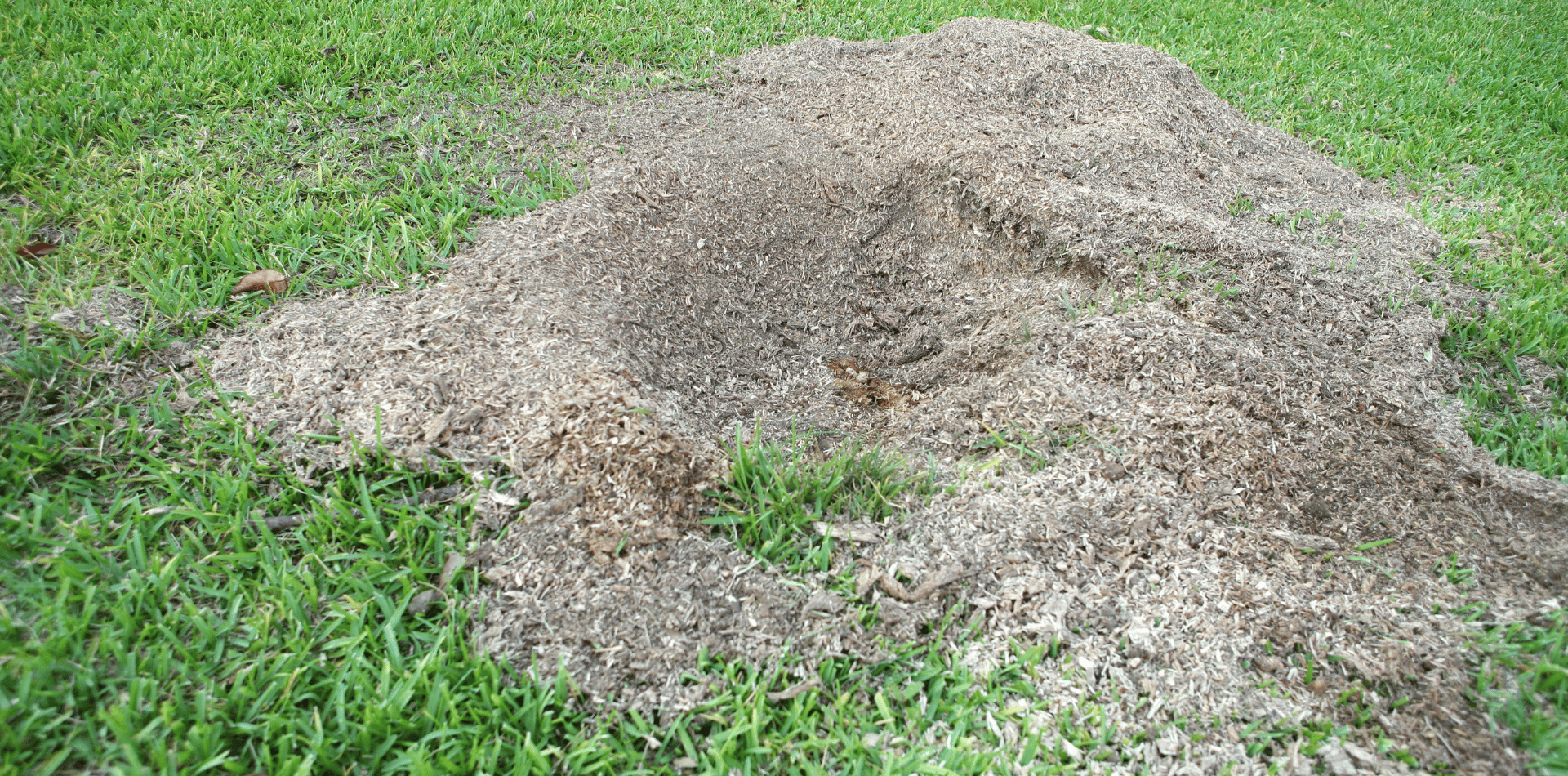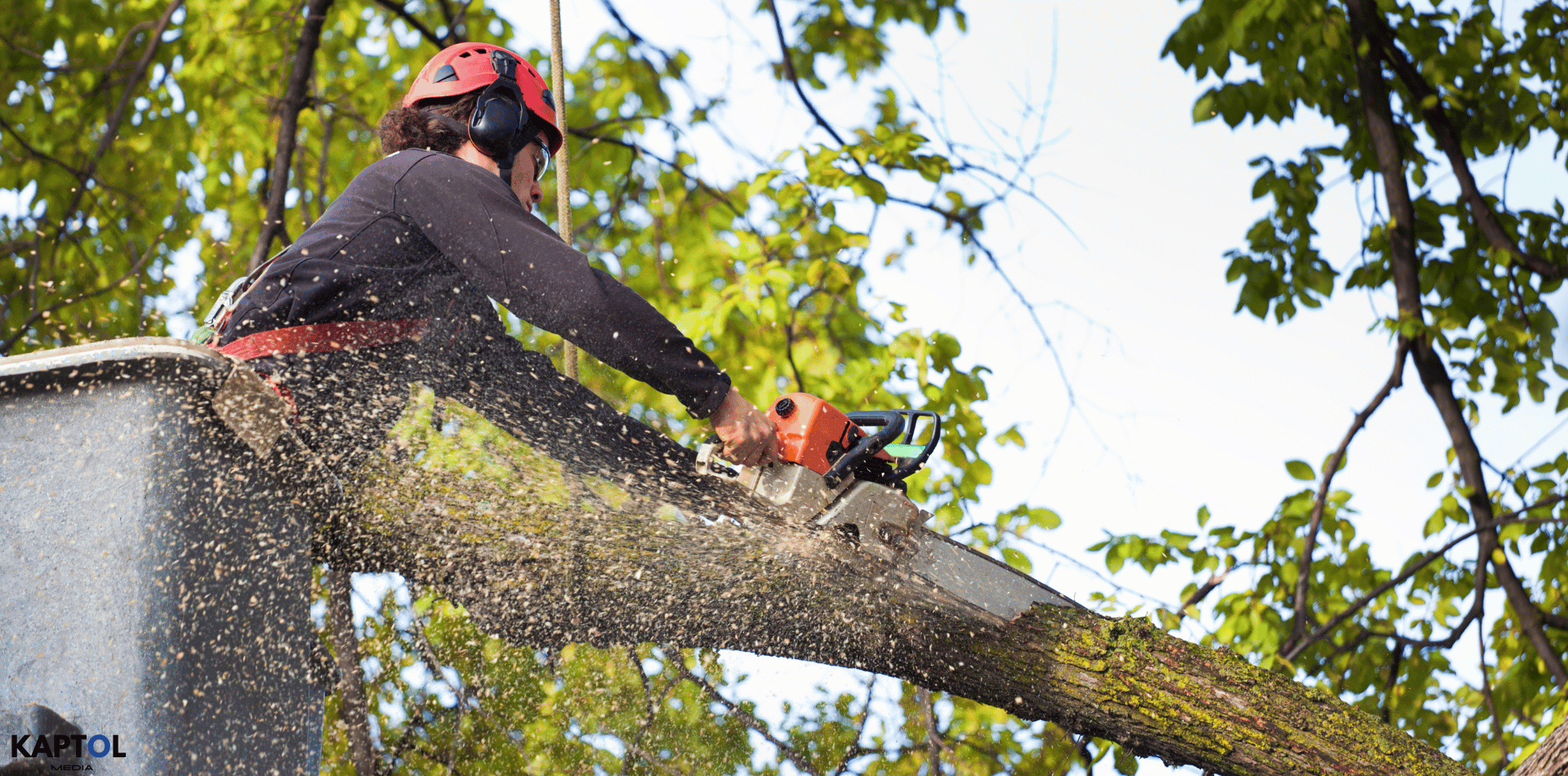Block and Land Clearing - What you need to know before you start.
What is Land Clearing?

Land and block clearing Newcastle is the first step towards a clean and clear a property.
Land clearing is a dangerous process and usually involves the use of specialist equipment.
For your safety, and the safety of your family and neighbours, it is essential you engage the services of a licenced and experienced Tree Removal Company.
What is Land and Vegetation Clearing?
Land and vegetation clearing, an essential process for various development, agricultural, and land management projects, involves the systematic removal of trees, plants, shrubs, and other natural obstacles from a designated area. This practice is often prerequisite for activities such as construction, farming, infrastructure development, and urban expansion. The process not only requires the removal of vegetation but also entails the preparation of the land for its intended future use, addressing challenges posed by the natural landscape.
Removing dying and invasive vegetation allows the remaining plants have better access to water and soil nutrients, as well as sunlight for photosynthesis for groundcovers and understory plants.
Ensuring minimal environmental damage is an important part of land and block clearing. When you hire experienced professionals, like the team at Kaptol Tree Services, you can be assured that all guidelines and regulations will be followed for the protection of important flora and fauna.
Methods and Equipment Used in Land Clearing
The methods and equipment used in land and vegetation clearing vary widely, depending on the size of the area, the type of vegetation present, and the intended use of the land post-clearance.
Common tools and machinery include:
- Chainsaws: For cutting down trees and large shrubs.
- Bulldozers: Used to push over larger trees, move soil, and clear land quickly.
- Excavators: Employed for removing large trees, stumps, and rocks, and for digging if required by the project.
- Stump Grinders: To remove tree stumps and roots, ensuring a flat surface.
- Brushcutters and Mulchers: For cutting and mulching smaller plants, bushes, and underbrush.
Purposes of Land and Vegetation Clearing
The reasons for undertaking land and vegetation clearing are as diverse as the projects that necessitate it:
- Agricultural Development: Clearing land for farming purposes, including the creation of fields for crops and pastures for livestock.
- Construction Projects: Preparing sites for residential, commercial, or industrial construction, including buildings, roads, and bridges.
- Infrastructure Expansion: Facilitating the development of utilities and public infrastructure such as power lines, water and sewage systems, and transportation networks.
- Fire Prevention and Management: Removing dense vegetation to reduce the risk of wildfires and to create firebreaks that can help control the spread of fires.
- Ecological Management: In some cases, clearing is done to manage invasive species, restore native habitats, or implement controlled burns for ecological health.
Environmental Considerations and Regulations
Land clearing, while necessary for development and land management, can have significant environmental impacts, including habitat destruction, soil erosion, and loss of biodiversity. As such, it is subject to various local, state, and federal regulations designed to minimise these impacts. These regulations may require permits, mandate the use of certain clearing methods, or necessitate environmental impact assessments before clearing can begin.
Environmental considerations and regulations play a crucial role in guiding and controlling the process of land clearing to mitigate its potential negative impacts on ecosystems, biodiversity, and the broader environment. These impacts, such as habitat destruction, soil erosion, and loss of biodiversity, underscore the need for comprehensive planning, assessment, and adherence to environmental laws and guidelines.
Environmental Considerations
- Habitat Destruction: Land clearing can lead to the loss of critical habitats for wildlife, including nesting, breeding, and feeding areas, which can result in declining populations of native species.
- Soil Erosion: Removing vegetation exposes soil to the elements, increasing the risk of erosion by wind and water. This not only degrades the land but can also lead to sedimentation in waterways, affecting water quality and aquatic habitats.
- Loss of Biodiversity: The removal of diverse plant and animal species reduces biodiversity, which can destabilise ecosystems, diminish genetic variation, and impact ecosystem services like pollination, water purification, and disease control.
- Water Cycle Disruption: Vegetation plays a key role in the water cycle by controlling the rate of evaporation and helping to filter and regulate water flow into rivers and groundwater. Clearing land can disrupt these processes, leading to altered water availability and quality.
- Carbon Emissions: Trees and plants store carbon, and their removal releases stored carbon dioxide back into the atmosphere, contributing to greenhouse gas emissions and climate change.
Regulatory Framework
To address these environmental concerns, a regulatory framework has been established at various levels of government—local, state, national, and international—to ensure that land clearing is conducted responsibly and sustainably.
- Environmental Impact Assessments (EIAs): Many jurisdictions require an EIA before large-scale land clearing can proceed. EIAs evaluate the potential environmental impacts of a project and propose mitigation strategies to minimize negative effects.
- Permitting and Approvals: Land clearing often requires permits from governmental bodies. These permits may dictate the methods of clearing, specify areas where clearing is prohibited, and outline required mitigation measures such as replanting.
- Protected Areas and Endangered Species: Laws such as the Endangered Species Act in the United States protect habitats of endangered and threatened species, restricting land clearing in critical habitats and requiring measures to protect these species.
- Soil and Water Conservation Measures: Regulations may require the implementation of erosion and sediment control measures, such as silt fences, riparian buffers, and the maintenance of natural vegetation along waterways.
- Reforestation and Rehabilitation: Post-clearing, regulations may mandate reforestation or rehabilitation efforts to restore ecosystems, enhance biodiversity, and reduce carbon footprint.
Best Practices for Sustainable Land Clearing
Beyond compliance with regulations, adopting best practices can further reduce the environmental impact of land clearing:
- Integrated Land Use Planning: Planning that considers the environmental, social, and economic impacts of land use can help balance development needs with conservation goals.
- Minimising Land Disturbance: Employing techniques that minimise soil disturbance and vegetation removal, such as selective clearing and the use of low-impact machinery.
- Conservation Easements: Establishing conservation easements can protect significant natural areas and biodiversity by restricting land clearing and development.
- Monitoring and Management Plans: Implementing monitoring programs to assess the impact of land clearing and management plans to address any negative outcomes over the long term.
Addressing the environmental considerations of land clearing through stringent regulations and sustainable practices is essential for preserving natural habitats, protecting biodiversity, and ensuring the health and resilience of ecosystems amidst ongoing development pressures.
Adopting sustainable land clearing practices is crucial for minimising environmental impacts, promoting ecological health, and ensuring the long-term viability of land use.
By integrating these best practices, developers, landowners, and environmental managers can significantly reduce the negative effects of land clearing activities.
Here's an expanded look at the recommended sustainable practices:
1. Selective Clearing
- Objective: To minimise habitat disruption and preserve biodiversity by only removing vegetation that directly conflicts with the specific needs of the development or land use project.
- Approach: Use detailed mapping and environmental assessments to identify critical areas for conservation, such as habitats for endangered species, waterways, and significant vegetation.
- Benefits: Reduces the impact on ecosystems, maintains ecological functions, and supports local biodiversity.
2. Erosion Control Measures
- Strategies: Silt Fences and Sediment Barriers: Install around the perimeter of the clearing site to capture sediment before it can enter waterways.
- Contour Plowing: Follows the natural contours of the land to reduce runoff velocity and soil erosion.
- Cover Crops and Temporary Vegetation: Plant immediately after clearing to stabilize the soil, reduce erosion, and suppress weed growth.
- Benefits: Protects soil resources, maintains water quality, and reduces the risk of landslides and sedimentation in nearby water bodies.
3. Replanting
- Native Vegetation: Focus on planting species that are native to the area, as they are adapted to local conditions and support native wildlife.
- Reforestation and Restoration: Where feasible, undertake efforts to reforest cleared areas or restore them to their natural state to compensate for habitat loss.
- Planning: Develop a planting plan that considers species diversity, density, and the ecological role of the planted vegetation.
- Benefits: Enhances biodiversity, contributes to carbon sequestration, and helps to rebuild ecosystems.
4. Professional Expertise
- Consultation: Work with ecologists, arborists, and environmental consultants who can provide expertise on sustainable clearing methods and environmental protection measures.
- Best Practices: Professionals can advise on the latest techniques and technologies for minimising damage to the environment during clearing.
- Regulatory Compliance: Ensure that all clearing activities comply with local, state, and federal environmental regulations and guidelines.
- Benefits: Helps to avoid costly mistakes, legal issues, and potential damage to the reputation of the project or developers involved.
Additional Sustainable Practices
- Integrated Land Management: Plan land use in a way that integrates development goals with environmental conservation, considering the long-term impacts on the land and its ecosystems.
- Monitoring and Adaptive Management: Implement a monitoring program to assess the ongoing impact of land use changes and adapt management practices as necessary to mitigate unforeseen issues.
- Community Engagement: Involve local communities and indigenous groups in planning and decision-making processes to ensure that land clearing and development activities respect local values, knowledge, and rights.
By embracing these sustainable land clearing practices, stakeholders can balance the needs for development and agricultural expansion with the imperative to protect and preserve our natural environment. This approach not only supports biodiversity and ecological health but also contributes to the resilience and sustainability of local communities and economies.
How much does land clearing cost?
The cost of land clearing cost depends on several factors:
- The size of trees (both height and diameter)
- The number of trees, shrubs and plants in the area
- The number of hills and dips in the area
- What kind of debris is present, such as rocks, which can damage equipment
- The number of trees that will remain and how easy it is to move around them
- The species of tree. (as they will vary in hardness)
$20 to $200 per Acre
For clearing flat land with light vegetation and few trees.
$500 to $2,000 per Acre
Clearing more sloping land with overgrown brush and a few trees.
$3,000 to $6,000
Clearing heavily wooded or bushland.
Most professional Tree Removal companies will provide a fixed price for an area of land following a site inspection. Site inspections are generally free of charge and can be done soon after receiving an enquiry.
It is essential to engage a company with highly trained and qualified staff who have AQF Level 2 to 5 Arborist Certificates.
A professional Tree Removal Service will also assist with:
- Site preparation
- Subdivision clearing
- Tree removal & levelling
- Debris removal
- Block levelling
When you are ready to hire an experienced land clearing company, contact Kaptol Tree Removal today for a free on-site inspection and obligation-free land clearing quote.
Included in our quote is a risk assessment and detailed photographs highlighting the work to be done.
We regularly deal with local councils and can assist you with regulations and approvals.
Our highly trained and experienced team have experience with complex tree removal, stump and root removal and much more. Our many years in the business and specialist equipment will ensure you the perfect result.
Kaptol Tree Removal specialise in smaller clearing projects like removing that one dead tree, right through to a full block clearing covered with dense bushland or foliage. Our team are experienced with heavy-duty equipment and will make short work of any trees and stumps.








Contact
Kaptol Tree Removal Newcastle
A Member of the Kaptol Group
Powered by Kaptol Media



